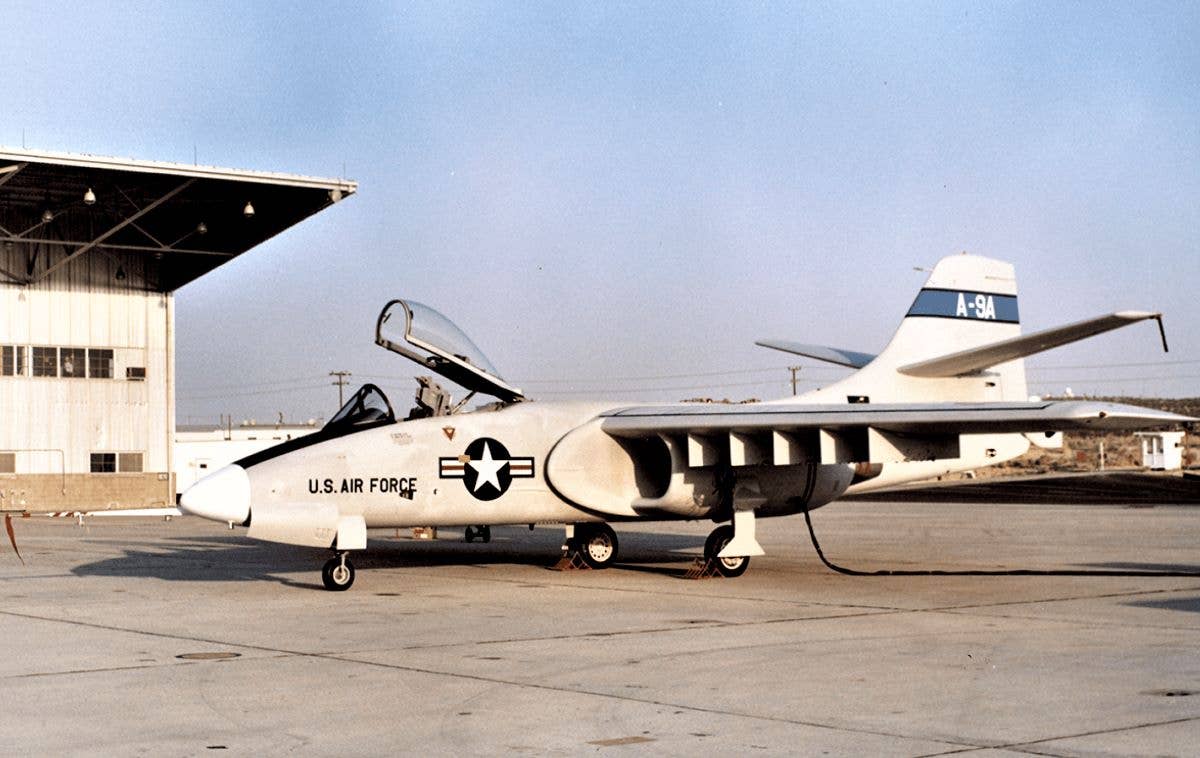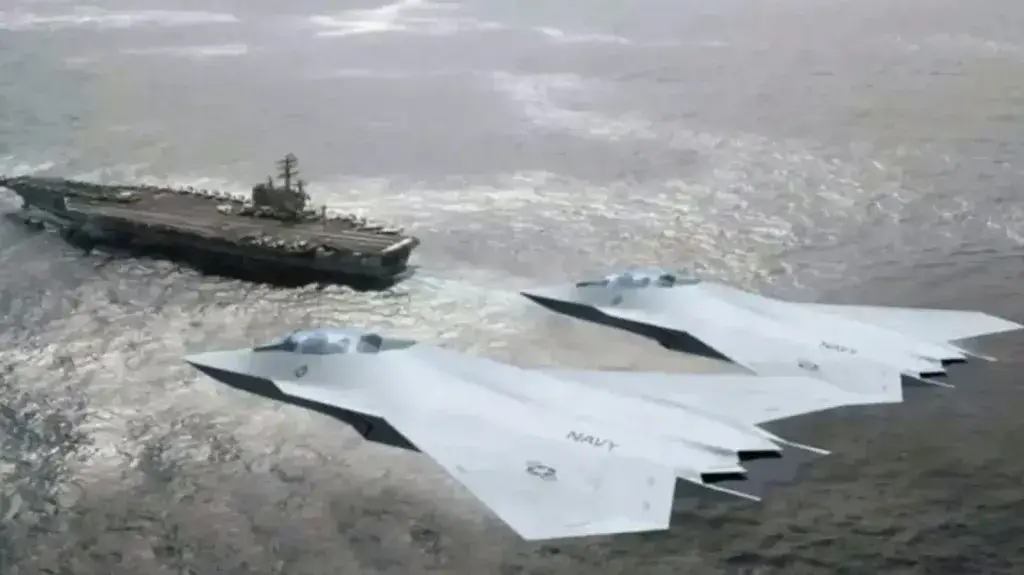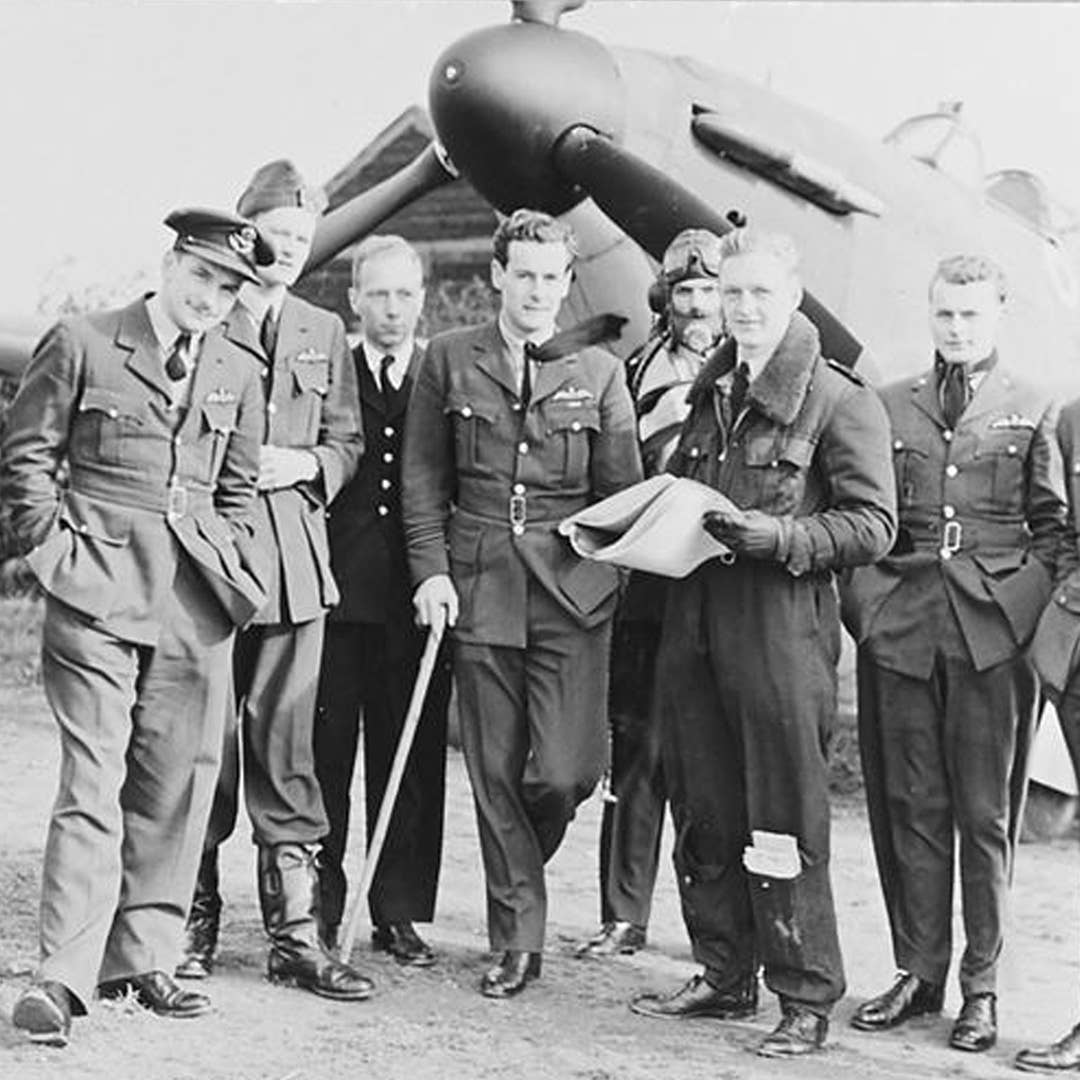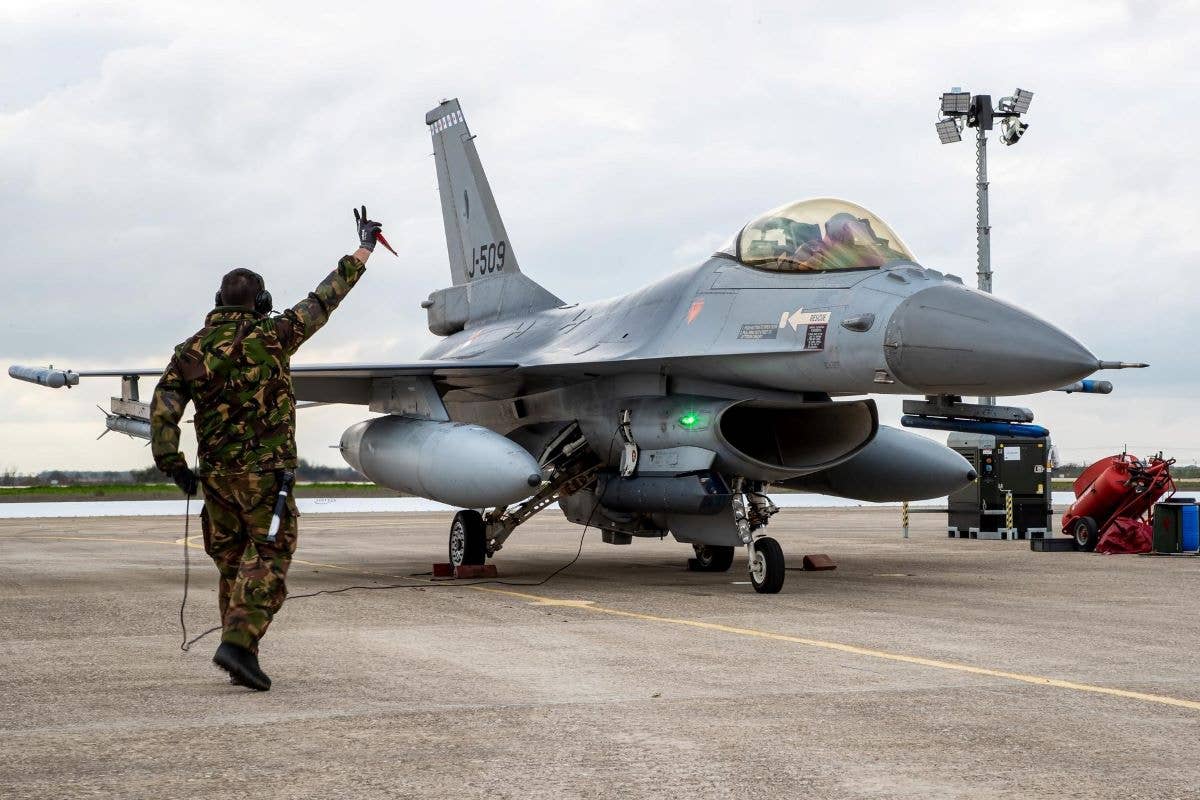The Close Call of the Northrop YA-9A Prototype
The close air support YA-9A had intriguing design features despite losing a pivotal contract to replace the aging Douglas A-1 Skyraider.

With a high-wing configuration, the low-slung Northrop A-9A has a very different appearance than its competitor, the A-10. [Credit: USAF]
In the mid-1960s, the U.S. Air Force presented aircraft manufacturers with an interesting challenge—design a clean-sheet close air support (CAS) aircraft to replace the aging Douglas A-1 Skyraider. Accustomed to developing sleek fighters and bombers that ventured into supersonic speeds, this new request challenged them to instead prioritize cost, survivability, and low-speed maneuverability. It was a new set of requirements that required new thinking.
Just as the design requirements were unconventional for the time, so too was the appearance of each proposed contender. A total of six manufacturers submitted a wide variety of proposals, ranging from multiengine jets to a single-engine V-tail pusher turboprop. In each case, the manufacturers prioritized function over form, with most concepts utilizing straight wings, bulbous canopies, and a multitude of external hard points on their wings.
The Air Force selected two designs to progress to the final stage, in which the finalists would build flying prototypes. The unconventional-looking Fairchild-Republic A-10 Thunderbolt II, better known as the “Warthog” would ultimately win the contract for this role. But its competitor, the Northrop YA-9A, provided some intriguing design features despite losing the contract.
At a glance, some similarities between the two finalists are evident. Both sport the aforementioned straight wings with many hardpoints, and the external dimensions are nearly identical. Both also utilize twin turbofan engines. But a handful of key differences stand out.
Chief among them, the YA-9A was designed with a high wing, as opposed to the low wing on the A-10. While the specific reasoning for this is unclear, the high wing enables the use of shorter, lighter landing gear. Additionally, a side profile diagram depicts workers standing alongside the aircraft, eye level with the engine, suggesting Northrop touted the design as providing mechanics with easy engine access during maintenance.
The YA-9 also uses a conventional cruciform tail—significantly different from the A-10’s low tail with twin vertical stabilizers. While this design was less complex and presumably lighter than that of the A-10, it provided less redundancy. In practice, A-10s have successfully demonstrated their ability to fly with a single vertical stabilizer.
Like the A-10, the YA-9A utilized turbofan engines, but the engine similarities stopped there. Rather than using a common, simple design like the A-10, the YA-9A was fitted with a less common and more complex geared turbofan called the Lycoming ALF 502. These would ultimately prove less reliable than similar engines, and NASA later salvaged and used them for their QSRA experimental short takeoff and landing jet.
While both contenders employed large Gatling-style rotary cannons buried in their noses, these also differed. While the YA-9A used a six-barrel, 20mm M61 Vulcan, the A-10 used a larger seven-barrel, 30mm General Electric GAU-8/A Avenger. As the latter uses heavier ammunition and the Air Force claimed it has superior ballistics, it would help make the A-10 the more effective combat aircraft.
A deeper dive into the YA-9A’s flight manual reveals additional insight into the overall design. It states that Northrop engineered the aircraft with two primary goals in mind—to provide an extremely stable platform for on-target accuracy during weapons delivery and to provide a high degree of survivability for both aircraft and pilot. The latter was achieved in a similar manner to the A-10, with strategically-located armor.
The on-target accuracy during weapons delivery, however, was achieved through the use of some flight control trickery. Northrop engineers wanted to enable quick steering corrections during weapons targeting, and they wanted to do so without creating any bank or sideslip. Their solution was called SFC, or side force control.
SFC blended the control inputs of the rudder with that of the speed brakes, which, like the A-10, were provided in the form of split ailerons. As the pilot introduces rudder input, simultaneous asymmetric speed brake deployment negates the rudder’s yawing moment. This control and coordination occurred automatically when in SFC mode simply through rudder inputs by the pilot.
Asked whether such a system would benefit the A-10, an A-10 pilot replied, “I mean…the rudders work just fine." This underscores the philosophy of simplicity behind the A-10 and suggests complex systems like SFC might have hindered the YA-9A more than they helped.
In terms of flying performance, the YA-9A seemed quite competitive. Takeoff distance at a 2,300-feet pressure altitude (the elevation of Edwards Air Force Base) ranged from 3,800 feet at the maximum takeoff weight of 42,000 pounds down to only 640 feet at 23,000 pounds with full flaps.
In the air, the YA-9A’s maximum speed was approximately 450 knots. Perhaps more impressive was its ability to maintain single-engine directional control down to only 75 knots. The control effectiveness necessary for this was likely a byproduct of the engineers’ emphasis on low-speed maneuverability in the intended CAS role.
Published landing distances were similarly impressive, with ground rolls ranging from 875 to 1,100 feet. This was helped in part by the massive ground spoilers that deployed to 60 degrees when the system sensed weight on wheels. Among the various performance objectives, this is one in which the YA-9A likely outscored the A-10 during the evaluation.
Ultimately, the A-10 would go on to win the competition, and Fairchild-Republic would go on to manufacture a total of 716 examples between 1972 and 1984. The Air Force mothballed the two YA-9As after the evaluation period but fortunately spared them from the fate of the scrapper. Today, both can be found at museums— one in storage at Edwards Air Force Base awaiting restoration and the other on display at the March Field Air Museum in California.

Sign-up for newsletters & special offers!
Get the latest FLYING stories & special offers delivered directly to your inbox






